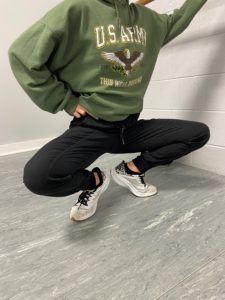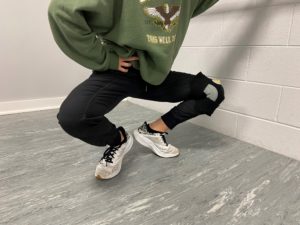Dancing with supportive brace : Is it the right choice for me?
One of the most common questions I hear when treating dancers is “Should I be wearing a brace on my injured knee or ankle while dancing?"
My short answer -- The brace is not going to help resolve an issue and often becomes a “crutch.” This, in turn, can lead to a series of unnecessary complications.
Let’s talk about what the brace is actually doing.
Our body is constantly receiving sensory inputs from our environment. While wearing a restrictive brace, the body senses the support being provided and sends signals to the joint and muscles. It may be causing you to have less pain when dancing, running, or jumping, but it is not preventing further damage to the involved joint or helping to resolve the cause of the pain. When the brace is taken off for events such as recitals and competitions, the dancer’s knees or ankles are not prepared for the demands of supporting your jumps and turns without the brace resulting in an increased risk of injury.
Temporarily wearing a brace for short periods of time can reduce pain and prevent a dancer from overdoing it in practice allowing the body healing time. However, wearing a brace for extended periods of time can cause joint stiffness due to lack of movement. As dancers know more than anyone, having excellent joint mobility and flexibility is key for their success. Dancing for an extended period of time without full mobility can greatly impact a dancer's technique. The limited movement or complete immobilization of a brace also prevents using muscles that would normally be free to move. As a result, these muscles can become weaker when in a brace for extended periods of time.


The pictures above show a dancer’s grand plie without a brace (on left) and with a brace (on right). As demonstrated, the patient has a deeper plie when not in the brace compared to wearing a brace. Wearing a knee brace can also cause the dancer to tilt their pelvis forward to achieve a deeper plie which is not technically correct.
So, what’s my answer?
Unless it is advised by their medical provider to wear a brace during all activities, I typically advise dancers to limit the use of braces as much as possible. This may mean they have to modify dance classes temporarily to avoid painful skills and further injury while receiving the necessary treatment to resolve the injury. Overall, this is a better solution than modifying skills while wearing a brace that can result in bad habits such as bent knees or hip hiking.
Is there anything else I can do while dancing with an injury?
Treating the injury and the source of the pain is the best solution. While working with your physical therapist you are able to gain the necessary strength and stability to return to dancing. I will work with you to make modifications in classes to keep you dancing at some level so there is minimum down time. In addition, I utilize kinesiology taping when possible. This will provide joint and muscle sensory input and encourage the muscles to fire on their own while not limiting mobility or jeopardizing technique.
Have you been utilizing a knee or ankle brace for a long time in dance class? Do you need help to know how to safely stop wearing a brace and safely return to dancing? Stop by and visit me at Smith PT and Running Academy so we can get you moving freely and without pain!
See you soon!